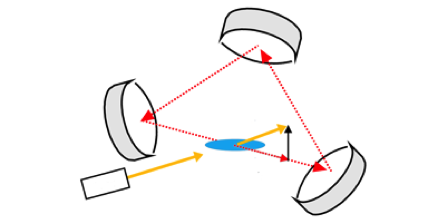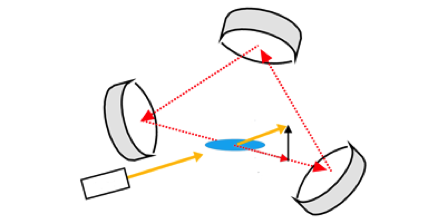Turning the Optomechanical Tables
As the name implies, optomechanics involves coupling photons to macroscopic devices. Recently, researchers have studied these kinds of coupled devices in the search for observable quantum effects in large objects. The conventional approach is to hook some mechanical resonator (think of a mass on a spring) to an optical resonator (a mirrored cavity that holds photons). Properly tuned, the radiation pressure of the photons can modify the mechanical motion, even cooling the system to near the quantum limit. But now, Keye Zhang of East China Normal University, Shanghai, and colleagues report in Physical Review Letters their theoretical analysis of a system that reverses the roles of light and matter.
The latest implementations of optomechanics rely on a cloud of ultracold atoms to play the mechanical system. Zhang et al., however, consider the case of a Bose-Einstein condensate trapped in an optical cavity, where the optical resonator photon field takes the part of the mechanical system being cooled by the “radiation pressure” of the atomic matter wave of the BEC. In practice, this means the oscillations of the BEC can be adjusted to damp or amplify fluctuations in the optical field. The authors show theoretically that this could lead to a variety of unusual quantum states in the system.
Assuming the experimental challenges—and there are many—of actually building this kind of device can be met, the new configuration could offer advantages both in the study of fundamental quantum behavior and in high-precision measurement. – David Voss





